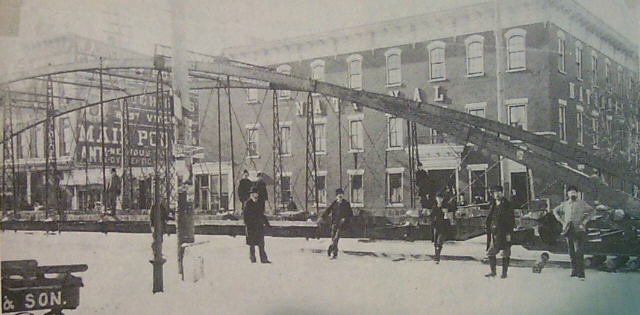House Moving in the early 1900's


Forty years ago, it was quite popular to move houses from one location to another with heavy trucks. When high speed freeways were being cut through metropolitan areas, the houses in their paths were sold for a song and carted off to vacant lots, often many miles away, installed on new foundations and were soon being put to good use by new families.
Those which couldn't be moved were torn down by cheap labor and the timbers and bricks were utilized to construct new homes. At that time, building materials were conserved and used over again. Today's high labor costs tend to prevent the re-use of old materials. It now is very costly to to tear a house down piece by piece.
Although you may find it hard to believe, a two horse team was normally used to accomplish house moves. The accompanying photos show how even fairly large structures could be moved from one place to another using plain old horse power.
First of all, the house was jacked up off its foundation and and placed on heavy wooden beams. Probably in this case, they were at least 12 x 12's. The ends of these beams were pointed and tended to act as runners similar to those on a sleigh. A temporary wooden track was put down in the street and the greased runners slid along it. The track consisted of flat planks, supported by cross ties, similar to those used on railroad tracks.
As the house inched along the street, the planks and ties left behind it were picked up and manually carried to the front of the house and laid down ahead of it. Numerous cross ties and planks, ready for re-use, are visible in the photos.
Obviously, you couldn't hitch a team directly to the front of a house, crack the whip, yell giddeeyapp and expect anything to happen. Horses just weren't that strong. Instead, it was necessary to mount a capstan in the middle of the street. This capstan was anchored to some very strong objects well ahead of the house. It would appear that the capstan shown in the pictures was anchored to trees by means of heavy chains.

A pulley was fastened securely to the front of the house, probably to a cross beam between the wooden runners. The pulley is visible directly below the right foot of the fellow who is perched on the front porch railing. One end of a very strong rope, or steel cable ran from this pulley to a tree trunk or other highly immovable object. It then went through the pulley and was wrapped around the capstan. The capstan was then turned by the horses which walked in a circle and tugged on a pole connected to the capstan. As they walked, the cable would slowly wind up on the capstan and pull the house forward. Yes, the horses had to step over the cable each time they encountered it.
Here is a close up view of the capstan. Since the horses are not pulling at the moment, the cable lies limply on the ground. If you look closely, you can see what used to be the front steps are being carried to the new location on the porch's floor.
